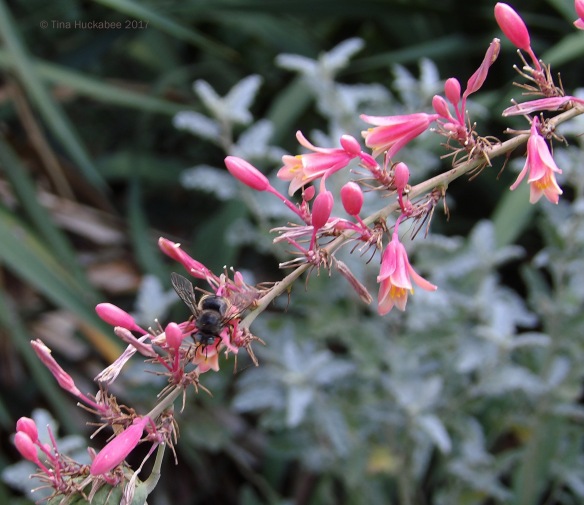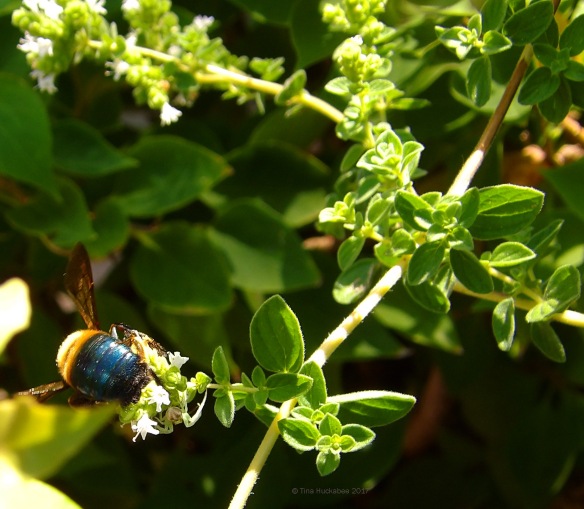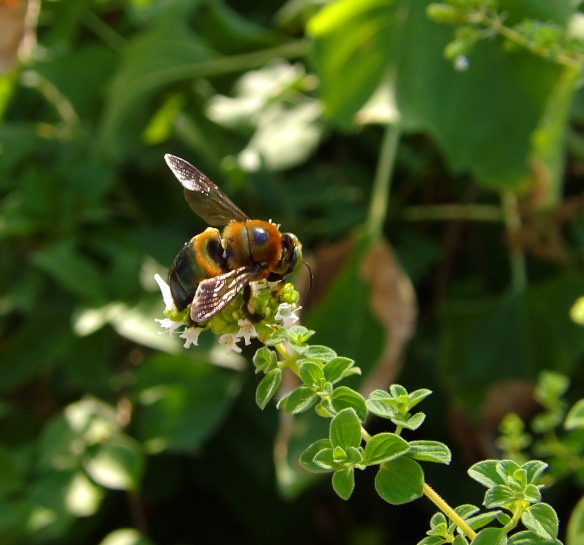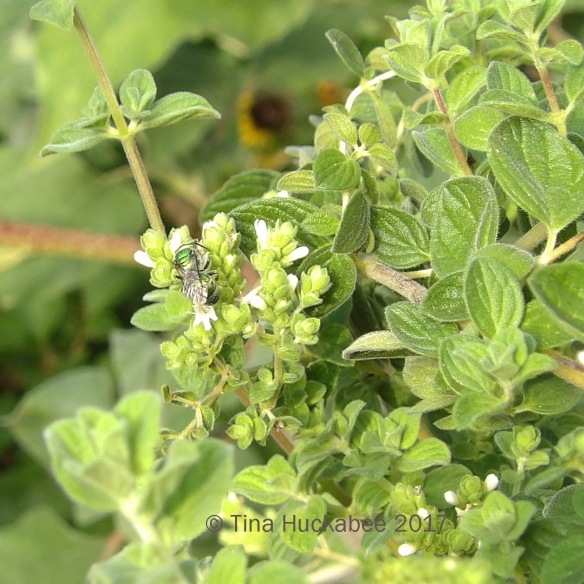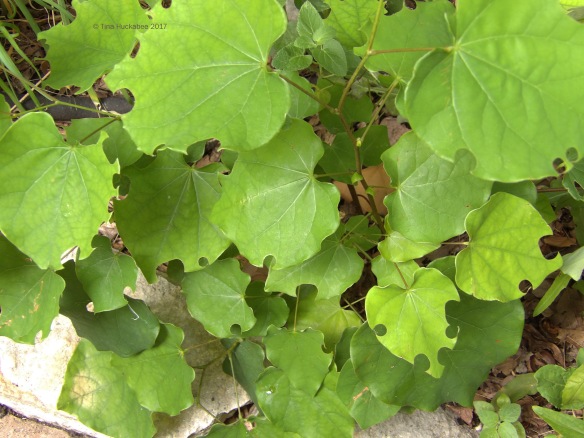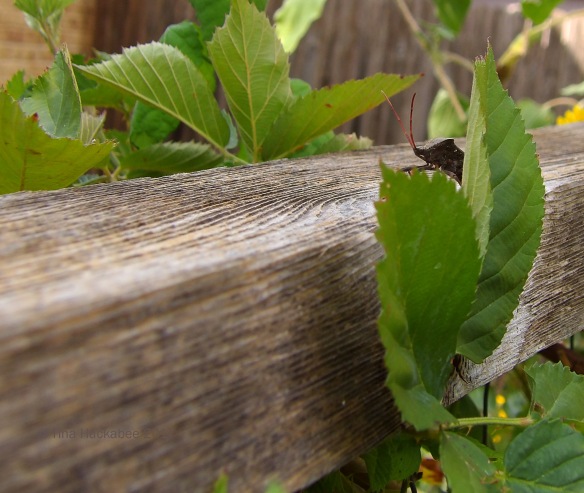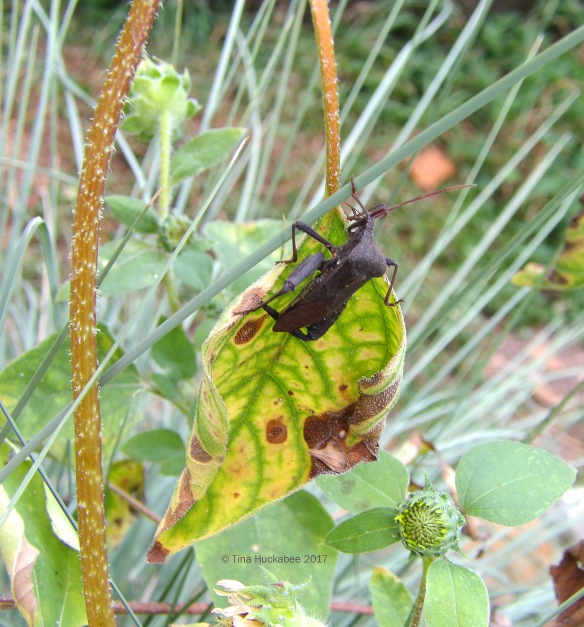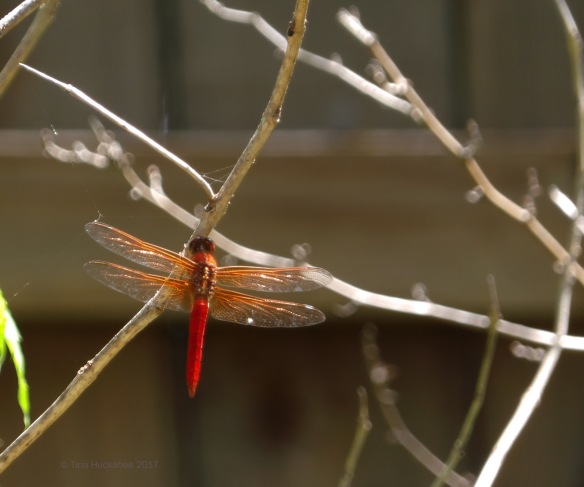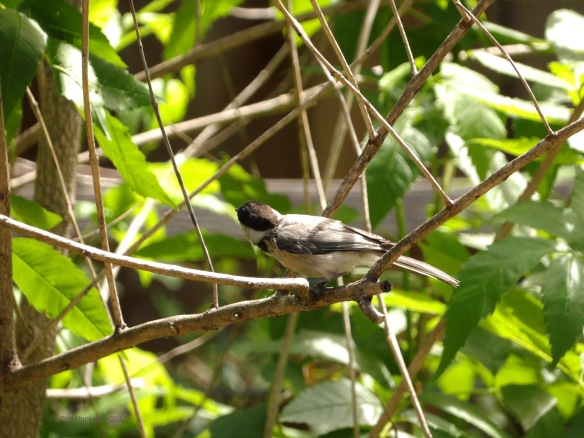As is typical for December here in Central Texas, our roller-coaster weather has delivered a couple of light freezes, but also record warm temperatures. Native plants and their companion critters have evolved to roll with that coaster, continuing the blooming and the pollinating actions well into late autumn.
On a windy afternoon, I watched this tiny Common Checkered Skipper, Pyrgus communis, flit near to the ground while visiting the remaining open blue blossoms of Gregg’s Mistflower, Conoclinium greggii, and sometimes alighting on the driveway, wings spread to catch the rays of the sun.
This particular mistflower is a relatively new addition to my garden. Gregg’s has grown in my back garden and there are still sprigs which pop up, but with increasing shade, those individual mistflower stems are growing less and blooming only sporadically with each passing season. I was determined to find a place in my shady garden to grow Gregg’s Mistflower and with some rearrangement of the garden furniture, I opened a spot in my front garden for the perennial groundcover, alongside the driveway and adjacent to the street, where full sun and reflective heat will be a boon to this tough, lovely native Texas plant.
Gregg’s Mistflower is a powerhouse pollinator plant. All sorts of butterflies, big and small, colorful and plain, love this sweet-nectared pretty. The original Gregg’s in my back garden–a passalong plant from a friend–blooms a paler blue flower and with brighter green foliage. This new plant–purchased from my favorite local nursery–sports deeper blue-purple blooms and a richer green foliage. I bought a new plant because I didn’t want to transplant the sprigs, with their bits of root, from the back garden so close to winter and possible killing frosts. Those stems of plant-with-roots might have survived winter, but I didn’t want to take the chance on their succumbing to a freeze, delaying growing Gregg’s in the front garden. The gallon pot of Gregg’s Mistflower will go dormant with a hard freeze, but its full, lush root system will allow the perennial to reemerge with strength in spring, ready for a new year of blossoms and food for bees and butterflies.
Despite the strong breezes, the Common Checkered-Skipper seemed besotted with its choice of meal. The host plants of this skipper species are several in the Malvaceae family, but adults nectar from a wider variety of blooms, including many in the Asteraceae family–like Gregg’s Mistflower.
The skipper’s blue-tinged hairy topside suggests a male; female Common Checkered Skippers’ hairy parts are black. This fella spent a minute or two on the fuzzy blooms it visited, working each in full before moving on. I was pleased (and surprised!) with these shots, as the wind was challenging to catching the skipper in something other than a blur.
Native plants and their critter companions are vital for a healthy environment. In this garden vignette, both the bloom and the butterfly were hard at work, doing their jobs: the blooms, providing nutrients and sustenance for the insect; the insect, partaking from a food source for its own benefit, but also, providing the impetus for the production of more mistflower by the action of pollination. The plant and its insect continue a time-honored cycle and add beauty to the world.
And isn’t that what gardening is all about?































